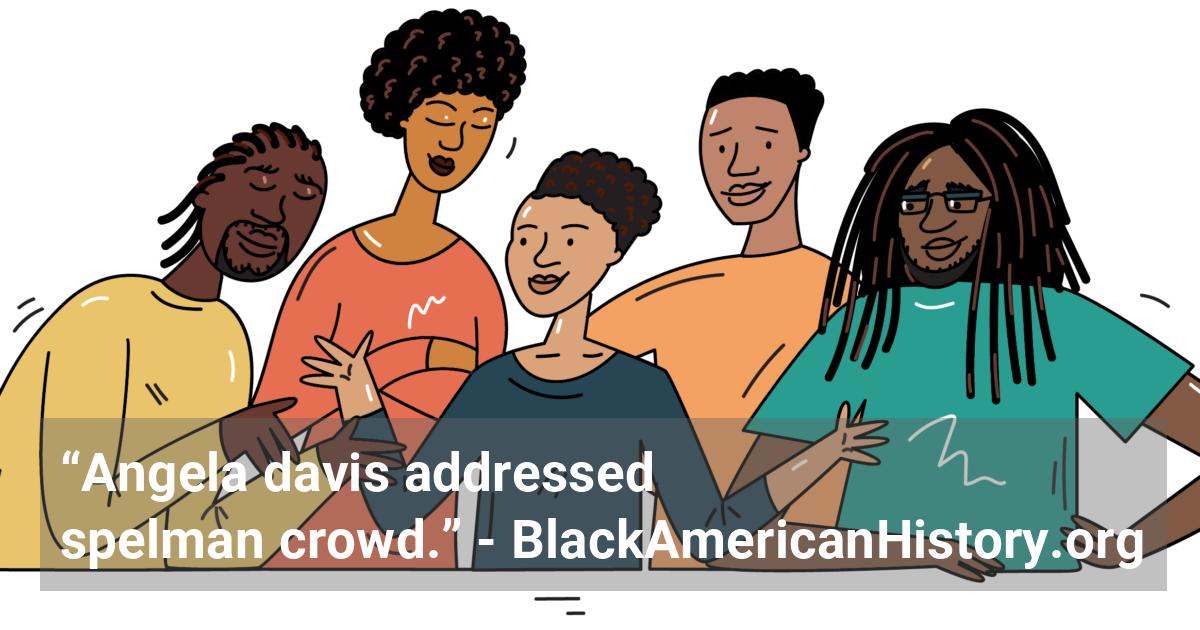Home / Full timeline / Professor and activist Angela Davis addresses a crowd at Spelman College, stating that activism is intensifying.
 Professor and activist Angela Davis addresses a crowd at Spelman College, stating that activism is intensifying.
Professor and activist Angela Davis addresses a crowd at Spelman College, stating that activism is intensifying.
1990 (Feb 3)
Angela Davis, professor of ethnic and women's studies at San Francisco State University, told a crowd of 1,500 people at Spelman College in Atlanta that "we're moving to an era of intense activism, something that is going to make the '60s look like a tea party." Davis was a controversial figure in the 1960s and 1970s as an activist who took more radical stances on issues than did leaders of the Civil Rights Movement, like Martin Luther King, Jr., and Roy Wilkins, of SCLC and the NAACP, respectively. In 1972, at the age of twenty-eight, Davis was tried and later acquitted of aiding three Black men who killed a judge during a shootout at the Marin County, California, courthouse. In 1980, she was the vice presidential candidate of the American Communist Party. In the 1980s, Davis, the late Malcolm X, and other Black "radicals" of the 1960s and 1970s had a resurgence of influence among young Black Americans, particularly on college campuses, as folk heroines and heroes. Their calls for "liberation by any means necessary" seemed to have new relevance to the problems of Blacks in the current decades, in the eyes of the students.
References:
- • Hornsby, Alton. Chronology of African-American History: Significant Events and People from 1619 to the Present. Detroit: Gale Research, 1995.
